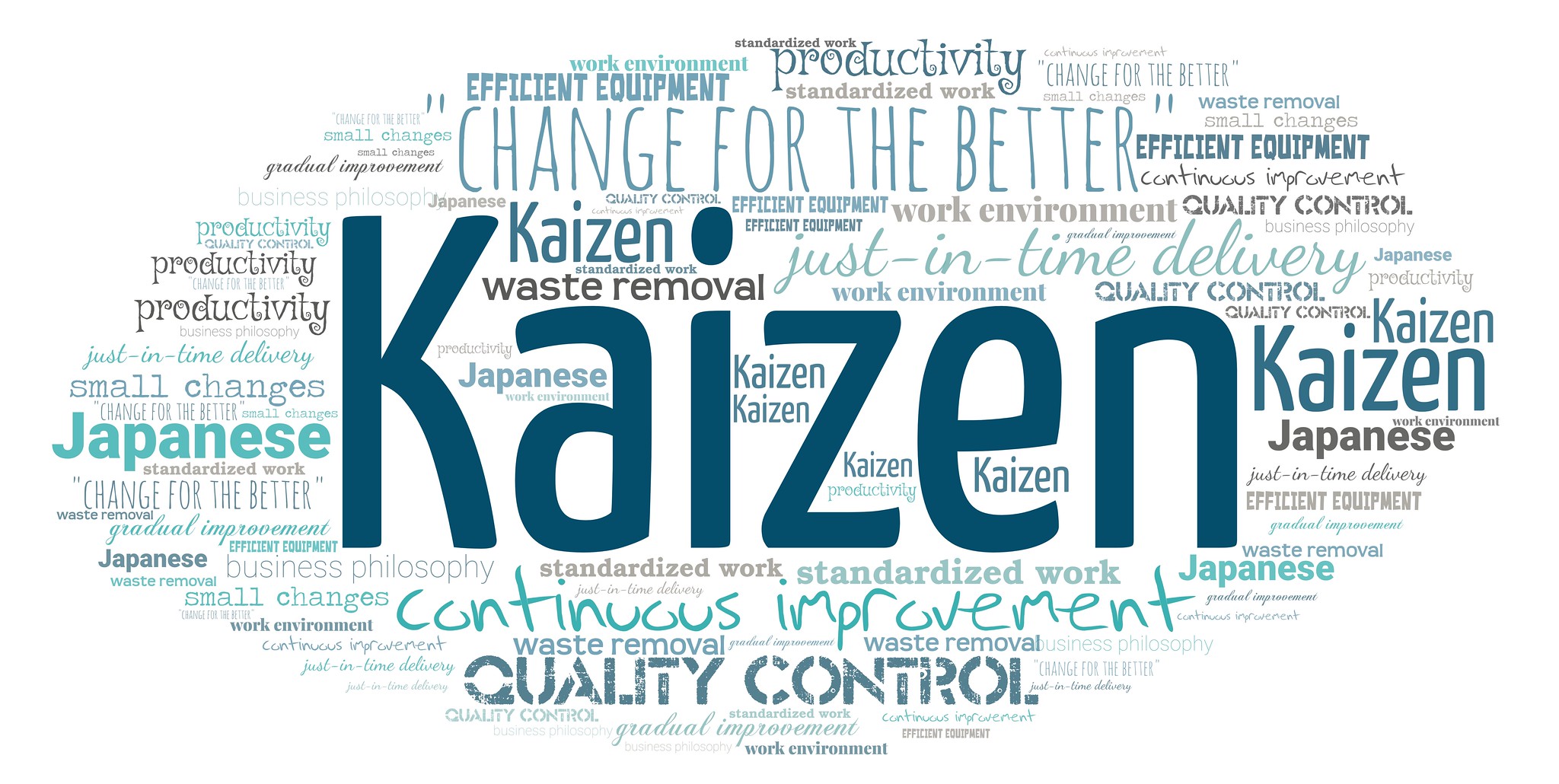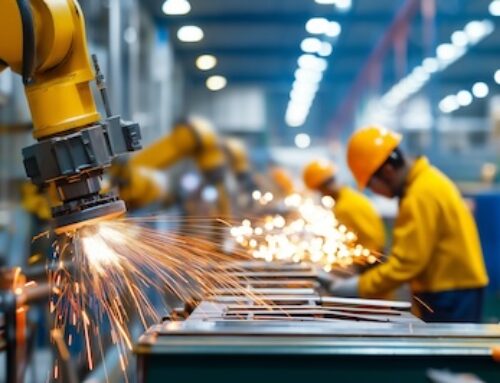In our previous installment, we took an in-depth look at the concept of continuous improvement (CI) – the idea that an organization can strive for perfection by constantly seeking improvements to its products and processes.
At Manex, we’ve helped numerous organizations transform their operations by creating a culture of continuous improvement, and today, we’ll share some practical tips on how you can get started with CI. And if you need more help, Manex can assist your organization in implementing CI strategies in your workplace.

Image credit: EpicTop10
The Ingredients of a Culture of Continuous Improvement
Continuous improvement requires a long-term organizational commitment. Every member of your organization, from top to bottom, must be constantly on the lookout for ways to streamline and reduce waste.
But how can that be achieved in practice?
It may seem like a daunting challenge to ingrain such a mentality into an organization, but there are a number of ingredients that can be used to build a culture of CI in your workplace.
Commitment From Leadership
As leaders, it’s only natural that our employees look to us for guidance, and that is doubly true when implementing a culture of continuous improvement.
Leadership must not only champion CI initiatives but also actively listen to their workforce for feedback and suggestions on how to improve operations. It’s important to set goals and expectations around CI and encourage active participation from employees.
Create Buy-In from Employees
Your front-line employees are often the greatest source for identifying areas of improvement. Those who work on the front lines see things from a vantage point that is not readily available to those in leadership. When you actively solicit and enact feedback from your frontline workers, it creates buy-in, and produces engagement from employees. They feel like their work matters, and that goes a long way towards increasing company morale.
Some effective ways to create engagement from your workforce include:
Training/Education Opportunities
Investing in your employee’s training is a highly effective way to increase their engagement. Give them the tools to thrive.
Solicit Employee Feedback
Setting up an online form, or even a physical suggestion box, is a quick and cost-effective way to immediately identify areas for improvement directly from your workforce.
Create a Recognition Program
When you publicly acknowledge and reward employees who actively contribute to organizational improvement, it creates an increased sense of ownership.
Consistent Communication
The importance of continuous improvement must be consistently communicated to the team. Whether done through regular meetings, training sessions, or even a company newsletter, reinforcing the ideas of continuous improvement is critical. When employees understand how and why their own quest for improvement can lead to large-scale improvement on a company level, it builds the proper long-term mindset.
Employ Data-Driven Decision Making
Collecting and analyzing data is a powerful tool used in achieving continuous improvement goals. Data is crucial to identifying areas for improvement, as well as for measuring the impact of the changes implemented.
Data can be mined from a variety of sources including machine logs, employee surveys, and customer feedback. Wherever the data comes from, it should be used to inform each decision you make towards improving your processes.
Incremental Improvements – Not Rapid Change
It’s important for your organization to understand that continuous improvement does not mean that you must make dramatic, wholesale changes to your operations. Continuous improvement is best realized through small, incremental changes over time. Keeping the focus on small changes makes the process more digestible and less intimidating.
Celebrate Success
When positive change has been realized, it’s important to celebrate that success, not just on an individual level, but within the organization as a whole. Creating incentives, like company outings or other rewards for increased performance, provides an environment where employees are motivated to do their best, and help the company grow.
Tools of Continuous Improvement
We discussed the PDCA framework for continuous improvement in our previous piece, and today we’ll dive into some other ways you can implement CI in your organization.
The 5S Methodology
Originating in Japan as part of the Toyota Production System, the 5S methodology is a Lean manufacturing tool that is often used in organizing a workspace. It helps eliminate wasting time by keeping things tidy, organized, and productive. The 5S methodology is comprised of these 5 techniques:
Sort (Seiri)
The first step of 5S is to declutter a work environment. Keep what is necessary for your goals, and remove the rest to another area or eliminate altogether.
Set in Order (Seiton)
After decluttering the work area, organize the remaining items in a way that is logical for completing the task.
Shine (Seiso)
Clean as you go, and keep your work area tidy. Keeping a clean workspace also makes it easier to identify issues or breakdowns when they occur.
Standardize (Seiketsu)
Standardize the first three steps, so that any team member can follow the guidelines. Organizing and keeping a clean workspace must become a daily task.
Sustain (Shitsuke)
Following the first 4 steps must be consistently done, so that they become a habit.
The 5S methodology has become a time-tested approach for improving a variety of aspects, including increased safety, reduced waste, and lower defect rates. It’s an easy-to-apply methodology in virtually any work environment.
Kaizen and Lean Tools
One of the most powerful methods for achieving continuous improvement is Kaizen, the Japanese method for achieving continuous improvement through small, incremental changes. Kaizen uses a variety of Lean tools including:
Kaizen Events
Kaizen events can be thought of as a brainstorming sprint, focused on solving a particular problem. A Kaizen event should include participants from all levels of an organization, from high-level executives, to managers, engineers, and front line workers. Kaizen events follow a structured process that encourages collaboration between all areas of the organization to develop a solution to the problem in a short amount of time.
Value Stream Mapping
Value stream mapping (VSM) is a Lean manufacturing tool that is used to create a complete visual map of an entire production process. Beginning with a current state map, each step in the process is denoted as value-creating, or non-value-creating. The goal is to create a future state map that eliminates non-value creating steps, thereby eliminating waste and streamlining the process.
Kanban
Another Toyota innovation, Kanban (Japanese for visual card) is a visual system for managing inventory and production. It uses a series of Kanban cards placed on a board to represent resources, tasks, and various stages in the production process. Its goal is to set “work-in-progress” limits to prevent bottlenecks and limit overproduction. Kanban boards can be physical, or can be created electronically via software.
Conclusion
Implementing a culture of continuous improvement is not a plug-and-play deal. It takes an ongoing commitment to utilizing the tools of Lean manufacturing in conjunction with Kaizen philosophies to transform your organization into one centered around a culture of continuous improvement.
Are You Ready to Implement a Culture of Continuous Improvement in Your Organization?
Manex’s team of experts is highly trained in the Kaizen and Lean manufacturing techniques that can build a culture of continuous improvement in your organization. We’ve helped an extensive list of clients streamline their manufacturing processes, and we’d love to help you next.
When you’re ready to begin building your culture of continuous improvement, contact Manex for an initial consultation. Our track record of producing results has positioned us as the most hired manufacturing consultant in Northern California, and we’d love to show you how we can make a difference in your organization.
Contact Manex today at info@manexconsulting.com or call 877.33.MANEX.


